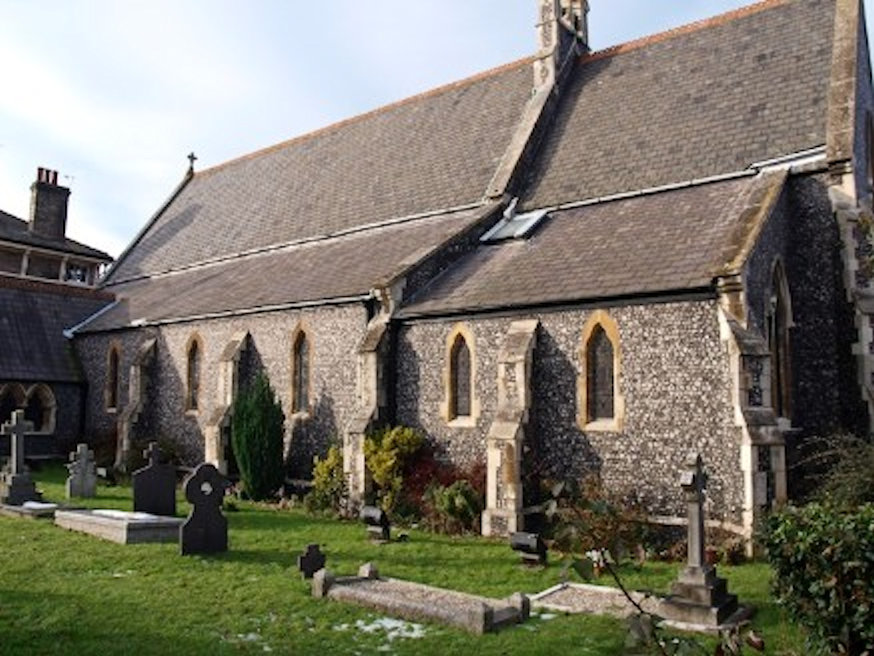The following sites have been selected to represent the different aspects of geology and landscape in the district. Not all sites have something to see; many are solely of historical interest as a record of an important or interesting discovery.
Some sites are not strictly geological but have a geological connection. Geological sites are therefore defined in their widest sense and include, for example, buildings, walls, wells, spas, springs, graves, boreholes, plaques, landslips and viewpoints.
This is not a complete list of geological sites in the district. Others will be added and descriptions expanded as further research is carried out.
Important note:
Not all of the sites here described are accessible. Some sites are on private land and can only be viewed from footpaths that pass through or alongside the site. Inclusion of a site on this list does not, therefore, imply any right of access. Please remember not to trespass on private land.
Sites of Special Scientific Interest (SSSIs)
GREAT LEIGHS. River Ter SSSI (TL 744 155 to TL 733 157)
The stretch of the River Ter in the vicinity of Lyons Hall has been notified as a geological SSSI because it is representative of a lowland stream with a distinctive flood regime. It illustrates well the relationship between river discharge and channel dimensions and has been used to test theories about why rivers adopt a meandering course. There are public footpaths alongside the river (including the Essex Way).
NEWNEY GREEN. Newney Green Pit SSSI (TL 648 065)
Kesgrave (Thames) Sands and Gravels are present at this site with a palaeosol (fossil soil horizon) of pre-Anglian age. This is overlain by boulder clay (till) which was deposited by the Anglian Ice Sheet. Occasional patches of glacial gravel are also found, and an (Anglian) arctic structure soil is superimposed on the pre-Anglian palaeosol marking a change from warm interglacial to intensely cold glacial conditions. This site is of prime importance for the correlation between Pleistocene sites in the Thames and East Anglian areas. A vital locality in working out the sequence of events in the evolution of the Thames. The pit has now been infilled except for the small area of the SSSI. The site is on private land.
Local Geological Sites (LoGS)
Chelmsford City Council – Report on Local Geological Sites & LoGS Citations – November 2018
Note: specific LoGS Citations for the sites below are contained in the downloadable document above
DANBURY. Buell Spring (TL 7839 0451)
Spring issuing clear water from a cast iron pipe. Remains of pumping station. Spring originates from the spring line that runs right around Danbury Hill (from between the Danbury Gravel and the London Clay). Historically important as the water supply for the area. Of particular interest is the accumulation of ‘bog-iron’ nearby – a cementing of the soil by the iron compounds leached out of the gravel. Land owned by the National Trust.
DANBURY. Danbury Common Gravel Pits (TL 784 047 and TL 781 045)
Deep and extensive disused and overgrown gravel pits on east and west sides of Danbury Common (two separate patches of gravel) which provide visible sections through the Danbury Gravels – gravel that accumulated on the ice margin, where its southward progress was prevented by the London Clay high ground. Owned by the National Trust. Eastern pits heavily used by mountain bikers. The higher parts of the western pits are very sandy and used by badgers.
GREAT BADDOW. Beehive Lane Sarsen Stone (TL 719 055)
A sarsen stone 90 x 70 x 60 cm sits in the car park of the Beehive Public House in Beehive Lane. It was obtained from the old ‘Beehive’ gravel quarry before 1906.
HIGHWOOD. Parsons Spring Pits (TL 623 028)
Parsons Spring (also known as Parsons Wood) has numerous shallow but steep-sided pits where sand and gravel was once exploited. This sand and gravel is referred to on geological maps as ‘Stanmore Gravel’ (formerly called ‘pebble gravel’). How it was formed has been debated by geologists since the 19th century. Its origin is still unclear today although one theory is that it was laid down by a river, probably over one million years ago, during the early part of the Ice Age. The pits are clearly visible as overgrown hollows either side of the public footpath that runs through the wood.
LITTLE WALTHAM. Channels Golf Club Boulders (TL 724 112)
At the entrance to Channels Golf Club is an upright erratic boulder of Hertfordshire puddingstone 90 cm long with a plaque attached commemorating the restoration of a nearby gravel pit. On the other side of the road is a large sarsen stone 1.8 metres long. Other boulders have been reported from the golf course and on verges and in hedges but these have not been located.
SANDON. Sandon Gravel Pit (TL 747 043)
The disused Sandon gravel pit has good exposures in Kesgrave Sands and Gravels. Much of the pit has not been restored and therefore the quarry slopes and edges are largely as they were when quarrying ceased. This makes the site important for geology as there are several small exposures of gravel, for example on the southern lake edge. The Kesgrave Sands and Gravels were laid down during the early Ice Age by the River Thames when it flowed through mid Essex and Suffolk. The gravel is mostly flint but also contains ‘exotic’ pebbles of rocks from far upstream. Sandon Pit is also a Local Wildlife Site.
SOUTH WOODHAM FERRERS. River Crouch Foreshore (TQ 804 955)
River erosion at several places around the Essex coast has exposed evidence of human occupation dating from the Mesolithic Period. These settlements are now below high tide level and the most important of these is at Hullbridge/South Woodham Ferrers where a prehistoric land surface, possibly as much as 7,000 years old, is exposed on the foreshore of the River Crouch. The sites can only be examined at low tide.
STOCK. Stock Road Gravel Pits (TQ 6965 9962)
In woodland just west of the Stock Road, north of the village of Stock, are disused gravel pits. These pits are an important geological site because it was one of the very few places where the ‘Bagshot Pebble Bed’ was formerly exposed. The pits are now overgrown but with the permission of the landowner it would be relatively easy to re-expose the gravel for study.
Other Sites
BROOMFIELD. Broomfield Sarsen Stones (TL 705 104)
Two small but conspicuous sarsen stones by the church gate, the largest 60 cm long.
CHELMSFORD. Chelmsford Cathedral (TL 708 069)
Remarkable abundance of ‘bunter’ quartzite and Hertfordshire puddingstone from the Thames gravels in the extension to the chancel, built in 1923, and the vestry block, built three years later. Plus fine flint craftsmanship on the porch.
CHELMSFORD. Chelmsford Museum Puddingstone
Boulder of Hertfordshire puddingstone 70 x 60 x 30 cm by the front entrance to Chelmsford and Essex Museum in Oaklands Park.
CHELMSFORD. Church of Our Lady Immaculate (TL 7050 0625)
Built in 1846 the Church of Our Lady Immaculate in New London Road is a fine example of the use of knapped flint. The flint walls have limestone dressings and the building has a roof of Welsh slate.
CHELMSFORD. Former Moulsham Brickpits (TL 702 060)
Large areas of old Moulsham were formerly brick pits and several of these produced Ice Age fossils in the 19th Century. Particularly notable were the bones of elephant and hippopotamus, some of which are on display in Chelmsford Museum. The conspicuous areas of low-lying ground on the north side of New London Road are former pits. In the latter part of the Ice Age hippos are only recorded as being present in Britain once, during the Ipswichian Interglacial period. These fossils are therefore considered to be Ipswichian in age (about 120,000 years old).
LITTLE WALTHAM. Cliff of Glacial Till (TL 7216 1102)
In the southern part of the Phase 6 housing development area at Channels there is a vertical cliff of glacial till that remarkably has survived since quarrying ceased here several decades ago. Till is the deposit left by the glacier that covered Mid Essex 450.000 years ago, during the coldest part of the Ice Age. It forms the deposit on which much of the fertile soil of the area is formed. If it can be retained, this cliff would form the only accessible and visible exposure of glacial till in the whole of Essex.
PLESHEY. Pleshey boulders (TL 648 143)
On the traffic island at a road junction west of the village is a splendid erratic boulder of Carboniferous Limestone 1.1 metre long with fossil corals and a sarsen stone 0.7 metre long.
RETTENDON. All Saints Church (TL 770 960)
Typical church of Kentish Ragstone with a fine view. Splendid tomb of Italian marble.
RUNWELL. Running Well (TQ 7511 9657)
An ancient spring that gave its name to the village. Situated 300 metres south-east of Poplars Farm between Runwell and Rettendon, the well still exists and the water is said today to be of good quality. First recorded in Morant’s History and Antiquities of Essex in 1768. The water flows from the junction between the Bagshot Sand and the Claygate Beds.
SOUTH WOODHAM FERRERS. Bushy Hill (TQ 813 986)
Bushy Hill to the north of the town is a prominent and locally important landscape feature. It is composed of London Clay capped by Claygate Beds with notable landslips on the southern and western slopes. There are fine views of the Crouch valley from the summit.

